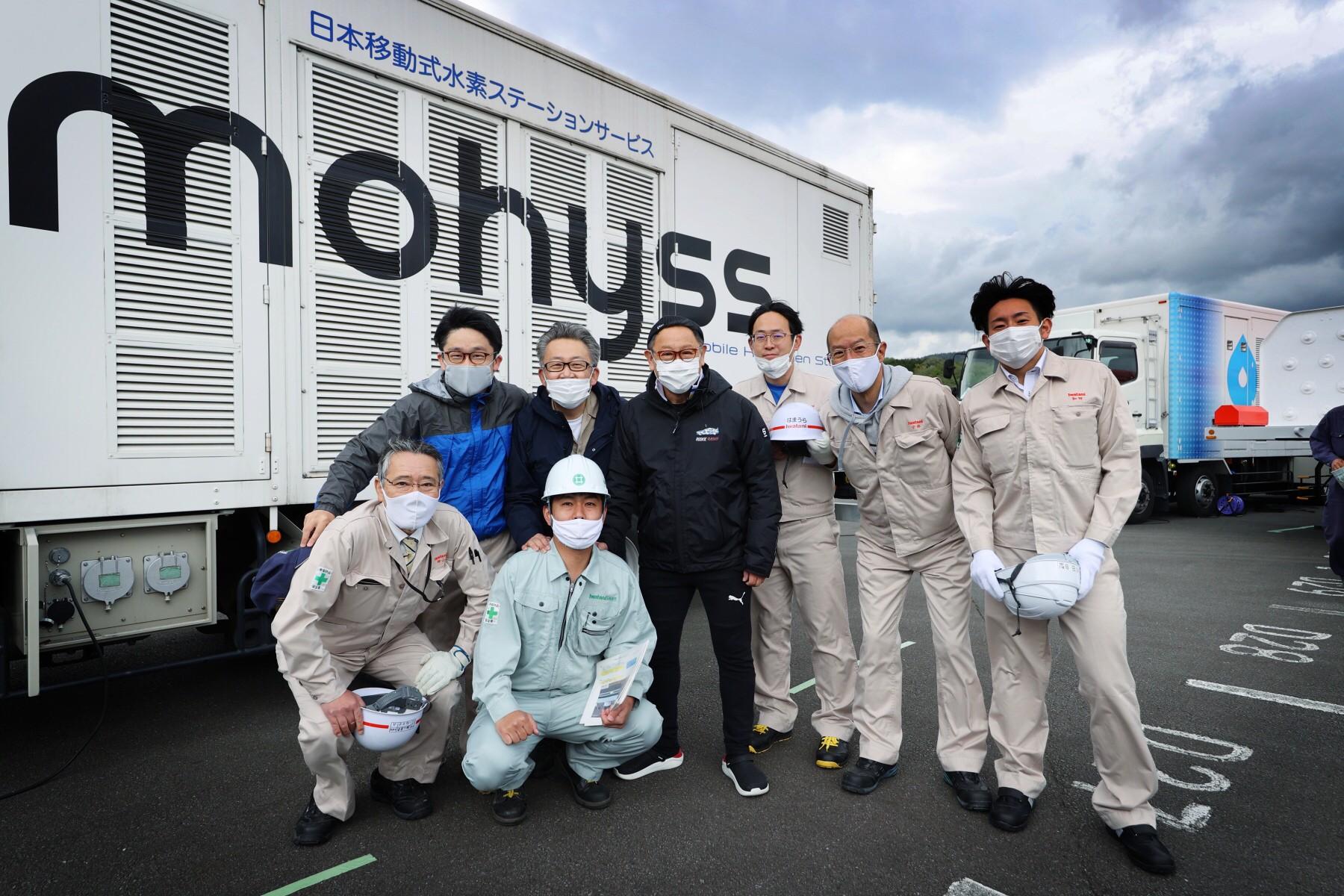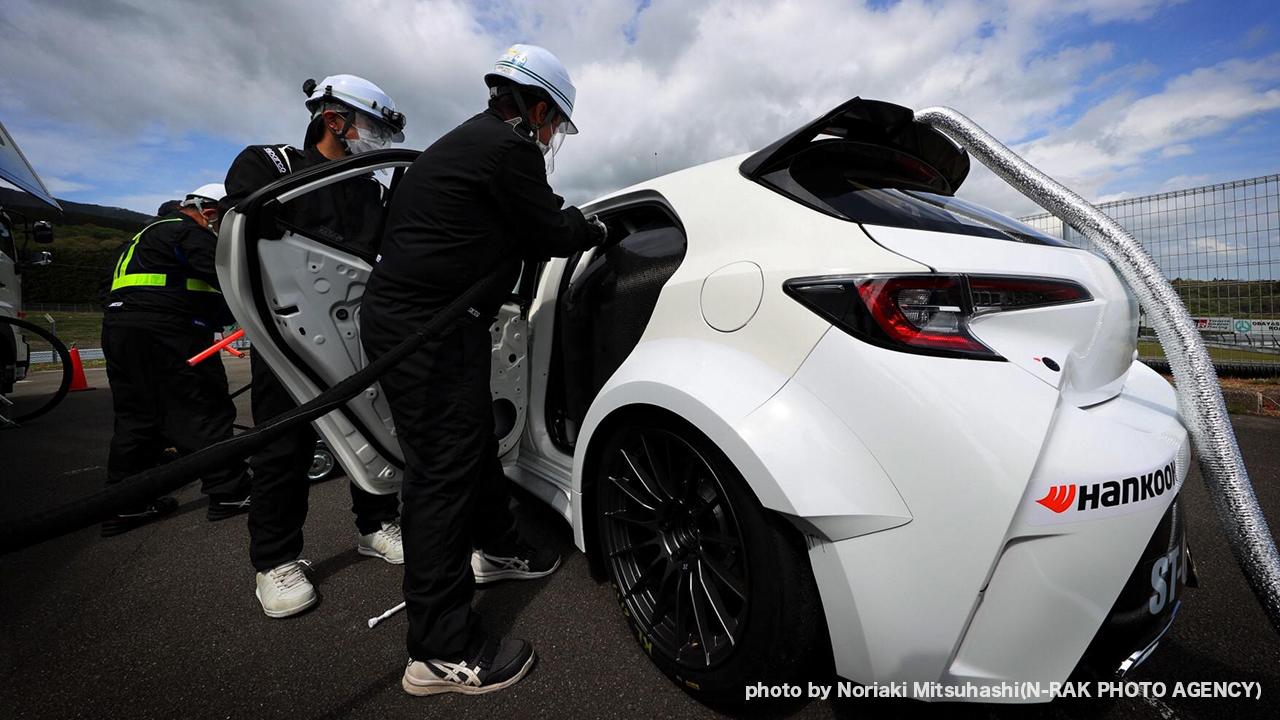
This series focuses on Toyota's challenge to compete in a 24-hour endurance race using a hydrogen-powered engine. This third part spotlights Toyota's efforts from scratch for refueling, or "filling", a vehicle using hydrogen.

When it comes to the action of hydrogen filling, some things might be helpful to know before Toyota competes using a car powered by a hydrogen engine in the coming 24-hour endurance race at Fuji Speedway.
Looking back on the words of President Akio Toyoda, who announced at a press briefing on April 22 that Toyota plans to race using a car with a hydrogen engine, it is clear that pit work, especially hydrogen filling, will hold the key.
Akio
More importantly, I’ve heard that fuel efficiency might be a problem, so in the case of a 24-hour race, the durability of the mechanics will be more of an issue than the durability of the car. As I expect (the car) to be in the pit often, it will be interesting to see what kind of system will be in place for the mechanic work over 24 hours. In addition to the normal tire changes and hydrogen filling, I imagine lots of different parts will have to be swapped out.
During races, vehicles make pit stops stop along the pit lane, during which they are swarmed by mechanics. Pit stops can include driver changes, tire changes, and refueling, after which the vehicles zoom back out onto the racetrack.
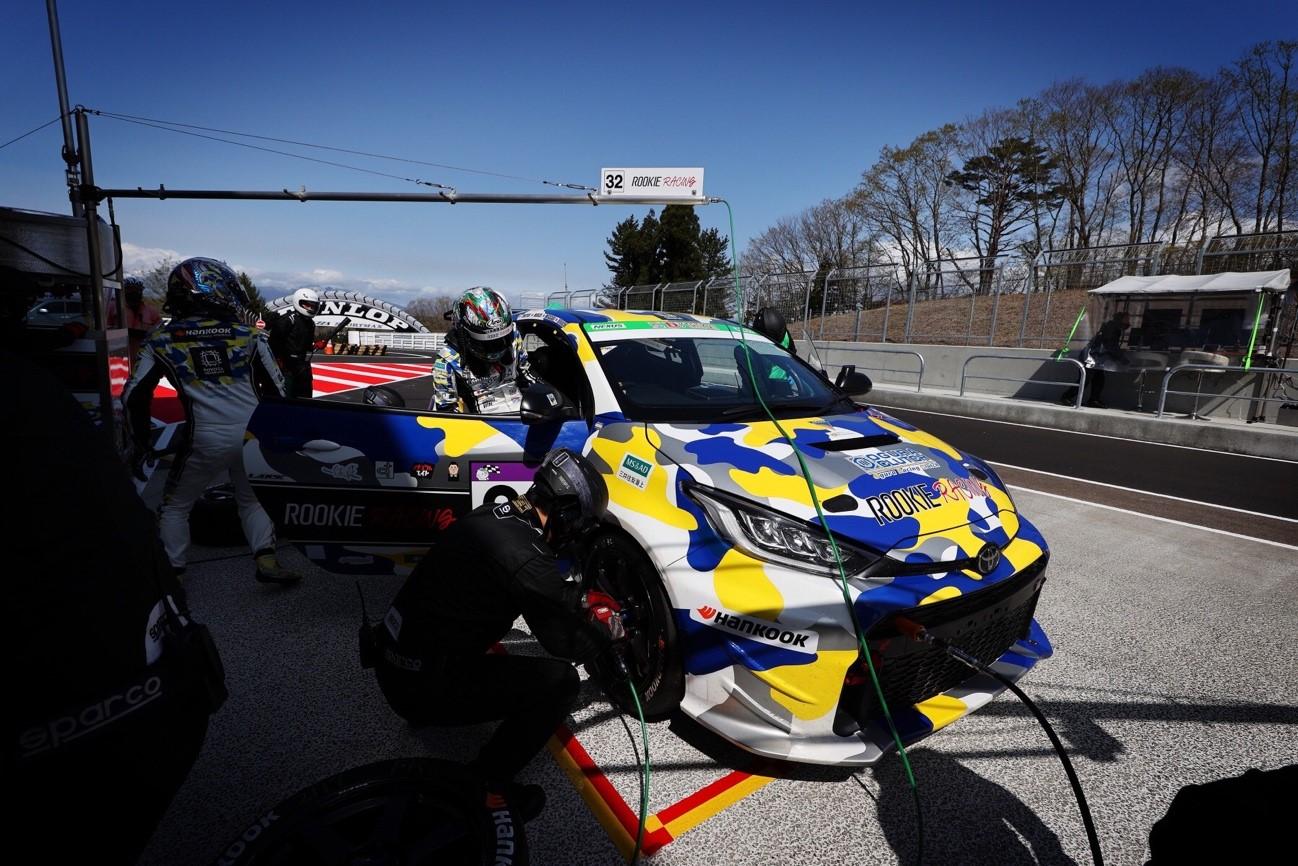
For quick work, each pit stop zone has its own refueling rig. But those rigs are only for liquid fuel, and there are no such quick-work rigs for use in hydrogen filling, as hydrogen (as mentioned in the first article in this series) is a gaseous fuel.
So, the issue has become one of how to refuel using hydrogen, as well as one of how to do so quickly and get the car back on the racetrack as soon as possible. And this meant thinking about things from scratch.
As mentioned in the first article in this series, the car that Toyota is readying for the race will feature tanks that are the same in construction as those used in the Toyota Mirai fuel cell electric vehicle.
When users of the Mirai want to replenish their fuel, they go to a hydrogen filling station somewhere in town to refill their Mirai’s tanks with hydrogen.
Currently, there are 144 hydrogen stations throughout Japan (as of May 2021). Such stations have yet to find their way into some prefectures, so widespread establishment is still in the making.
Broadly speaking, hydrogen stations come in two types: stationary and mobile. The stationary type has hydrogen stored in on-site fixed tanks. Meanwhile, the mobile type involves transporting hydrogen in a large tank affixed to a trailer to places that, in essence, become hydrogen stations.
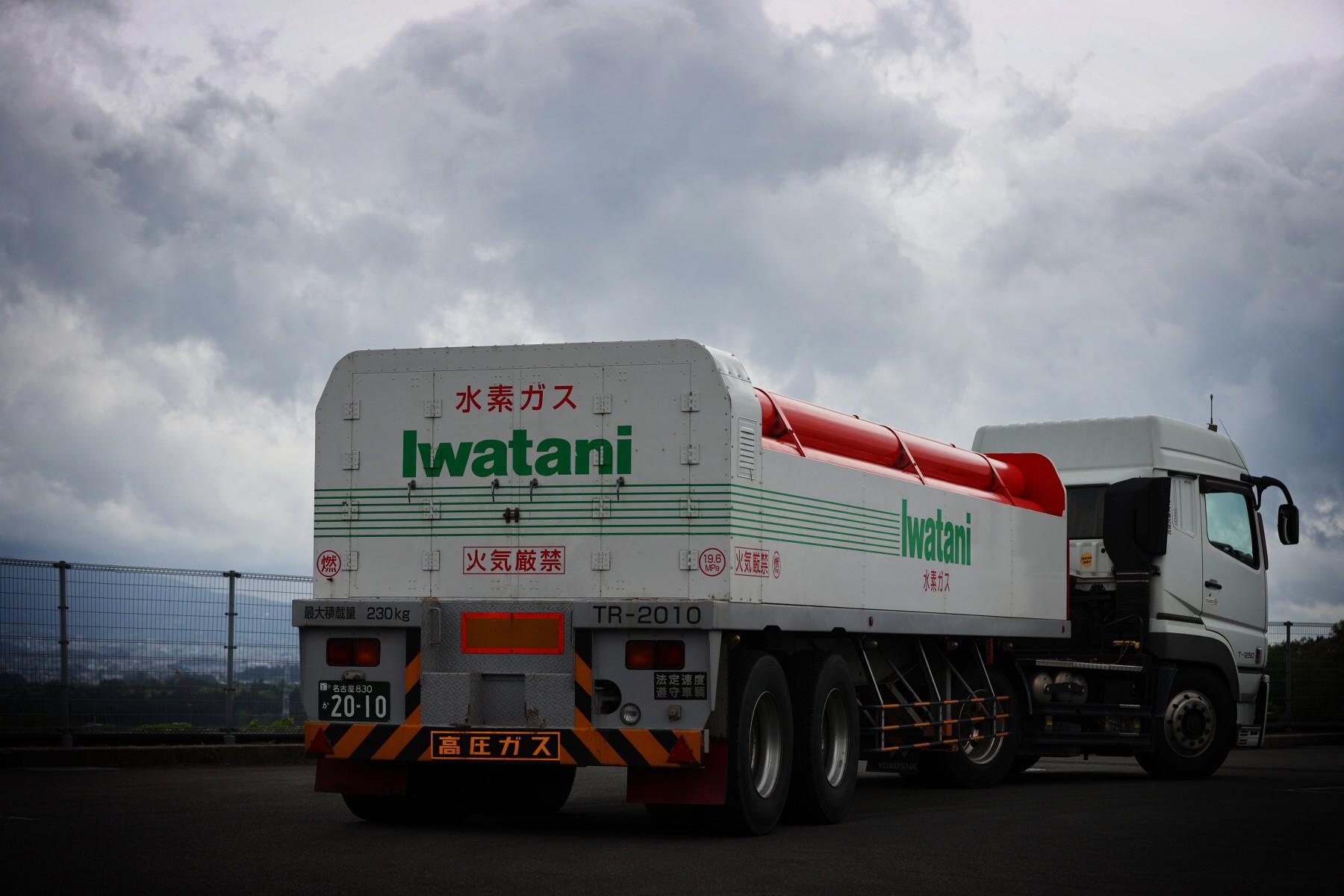
Simply put, for the coming race, this means having such mobile hydrogen stations go to Fuji Speedway. But, according to Project General Manager Yoji Kanie and Group Leader Masaaki Ichikawa of the GR Project Operation Division, both of whom were in charge of arranging hydrogen replenishment, such was more simply said than done.
How will hydrogen filling take place during the race?
Hydrogen is kept in a tank at high pressure. The situation is like that of a filled balloon. The same goes for the tank of a mobile hydrogen station and the tanks in a Corolla powered by a hydrogen engine.
To safely inject hydrogen stored at high pressure in a station’s tank into a vehicle-mounted tank, it is necessary to observe various laws and regulations, such as Japan’s High Pressure Gas Safety Act.
For example, four trailers loaded with hydrogen cylinders will be on standby during the final of the 24-hour race. Since the total storage amount will exceed a certain legally specified amount, approval from Shizuoka Prefecture, which is where Fuji Speedway is located and where the hydrogen is to be stored, must be obtained in advance.
Ichikawa
I consulted the team and the circuit and requested that ROOKIE Racing’s pit be positioned at the very end near the racetrack’s first corner. That’s because doing so would make it easier to get the car back out onto the racetrack from the pit lane.
After coming into the pit, pit work other than fuel filling, such as tire and driver changes, will be done first.
After that, the car will start its engine and take off on its own. Usually, a car would head back to the racetrack. But, in our case, we’ll have the car temporarily drive out to the paddock area away from the racetrack.
We’ve made arrangements to have a wide area set aside for us at the edge of the paddock area, where two mobile hydrogen stations (trailers) will be waiting. It’ll be kind of like having two gasoline stations lined up in a row. But we’ll be using hydrogen instead of gasoline.
We’ll have the car stop at the first station first and start the hydrogen filling procedure there. Then the car will start its engine and go to the second station a few meters away to top off its tanks, start its engine again, and head back out onto the racetrack. At first glance, it might seem like a bunch of trouble, but the filling time can actually be shortened by doing it this way, so that’s what I came up with.
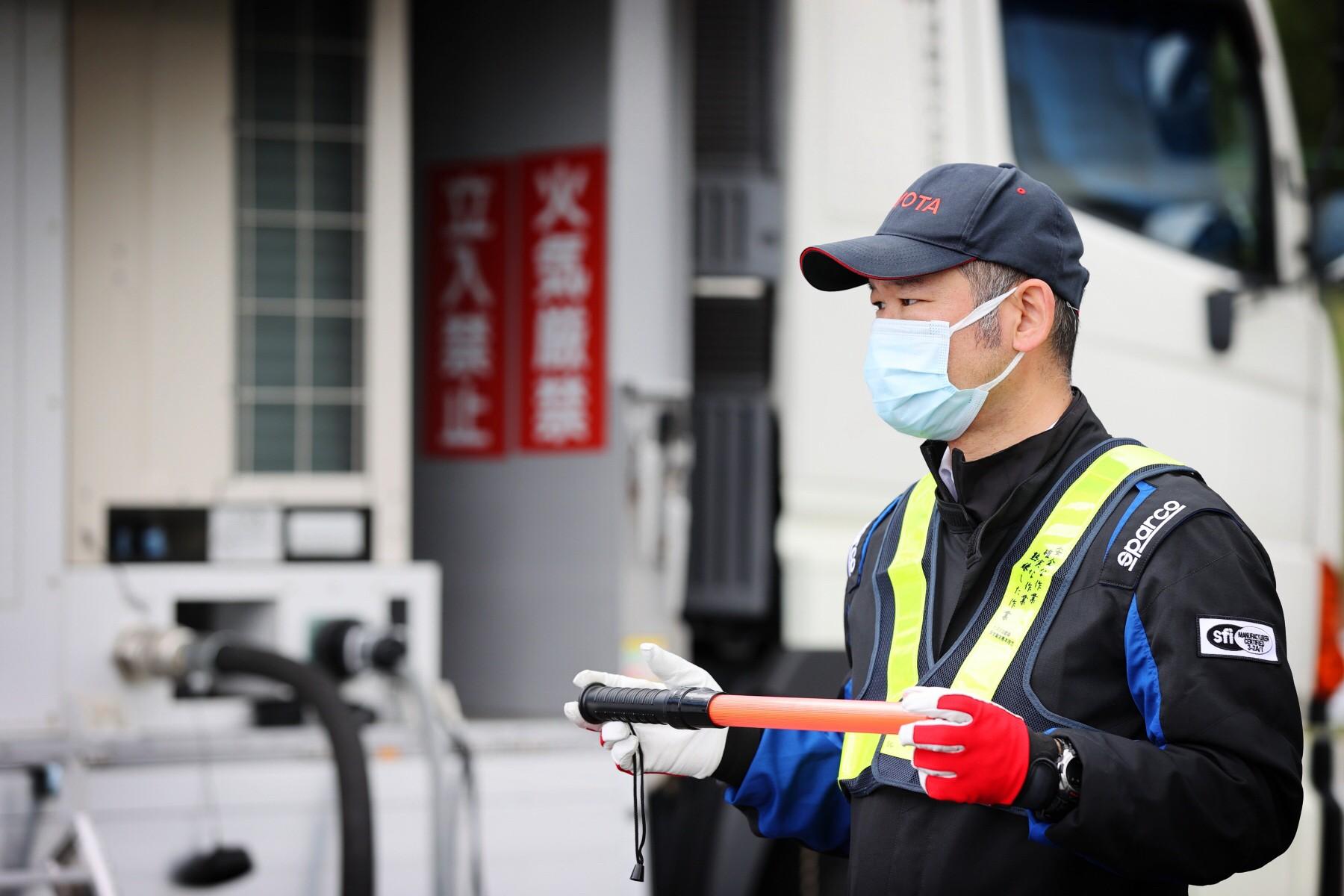
What might be hard to understand about that explanation is why splitting the filling procedure into two steps speeds up the process.
As mentioned above, a hydrogen tank is like a filled balloon. Here’s how to look at it: Toyota’s hydrogen-engine-powered Corolla starts out carrying hydrogen tanks that are full like tightly inflated balloons. To explain just how full, it’s said that the pressure inside the tanks is 700 times that of atmospheric pressure. Supplying the engine with that hydrogen gradually deflates the “balloons”, lowering the tank pressure.
When the tanks start to run out of hydrogen (like a deflating balloon), the vehicle will pit, hydrogen filling will take place (like a balloon being inflated again), and then the car will go back out onto the racetrack. (But, unlike in the case of real balloons, increasing the pressure doesn’t result in the tanks expanding.)

So, in terms of the coming race, let’s substitute hydrogen filling with a discussion of balloons.
The Corolla, which has been racing for some time and is now carrying largely deflated balloons, pulls into a hydrogen station that is full like a tightly inflated balloon. The Corolla and the hydrogen station are connected by a hose. And just as would happen in the case of two real balloons, hydrogen flows from the tightly “inflated” hydrogen station into the largely “deflated” tanks of the Corolla.
At first, the hydrogen is vigorously blown in, but when the pressure starts to equalize (when the hydrogen station’s state of “expansion” starts to be the same as that of the tanks of the Corolla), the speed of hydrogen injection starts to decrease. That’s when another tightly inflated balloon comes in handy. Hooking it up with the Corolla in place of the first one gets the hydrogen vigorously flowing again. This second balloon is the second hydrogen station, which is why there will be two hydrogen stations ready to go.
In a test the other day, the process at each hydrogen station took about five minutes. First, the injection of hydrogen from a station to the Corolla’s hydrogen tanks took about three minutes. After that, it was not simply a case of disconnecting the hose and the Corolla heading to the second station or back onto the racetrack. After a certain amount of hydrogen had been injected, the person in charge yelled: “Starting depressurization!” and moved on to the next step.
Apparently, immediately trying to remove the hose would be dangerous, as it would be like a champagne cork flying off due to the internal pressure. (The hose has a structure that prevents it from being disconnected and flying off unless it is ready.)
After the pressure is relieved on the station side, the hose is safely disconnected. Depressurization takes about one minute. Although it came to be recognized that stopping at two stations would allow for a shorter total filling time, the overall process still requires much time.
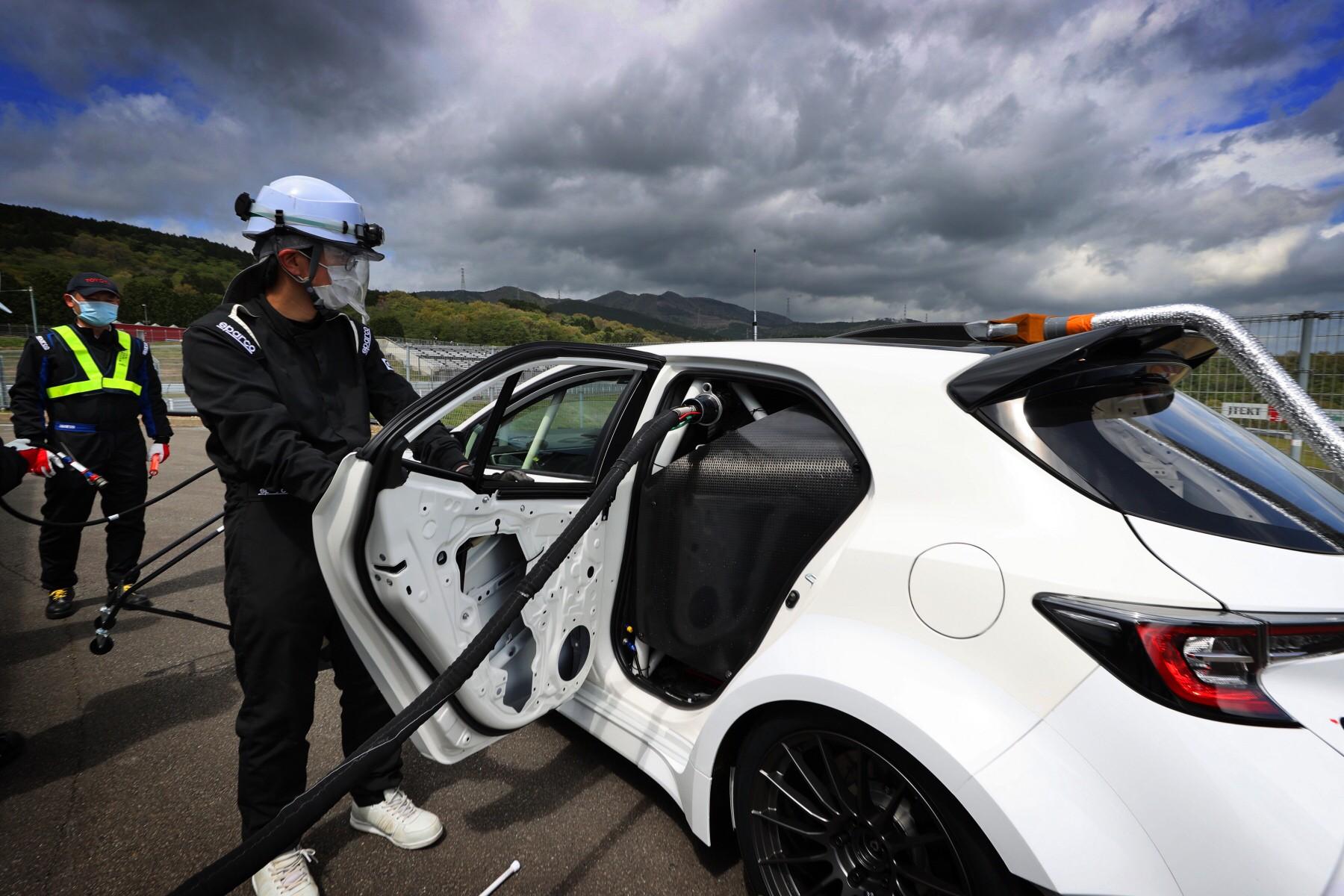
This will be the first time in the world to race using a car powered by a pure hydrogen engine. And that will come after only having decided to race four months ago, after which various rushed preparations were made. At least, development is at the stage in which the basics of racing with a hydrogen engine are finally in place.
Now that a mobile hydrogen station has been temporarily installed at a racing circuit, there may be some findings through racing that could lead to innovations in hydrogen filling.
Racing using green hydrogen
Hydrogen combustion is CO2-free. However, CO2 can be emitted during hydrogen production. As such, hydrogen is labeled as “green hydrogen”, “blue hydrogen”, and “grey hydrogen”, depending on how it is sourced.
Grey hydrogen is a fossil-fuel by-product for which CO2 is emitted during the production process. Blue hydrogen is hydrogen for which efforts are made to capture and store the CO2 emitted during the production of grey hydrogen or other means. Green hydrogen is generated by the electrolysis of water using renewable energy (solar energy or wind power generation). Green hydrogen does not emit CO2 even during production.
The hydrogen that will be used for the coming 24-hour race and that is already in the tanks of the two mobile hydrogen stations at the race venue is green hydrogen produced in Namie Town, Fukushima Prefecture.
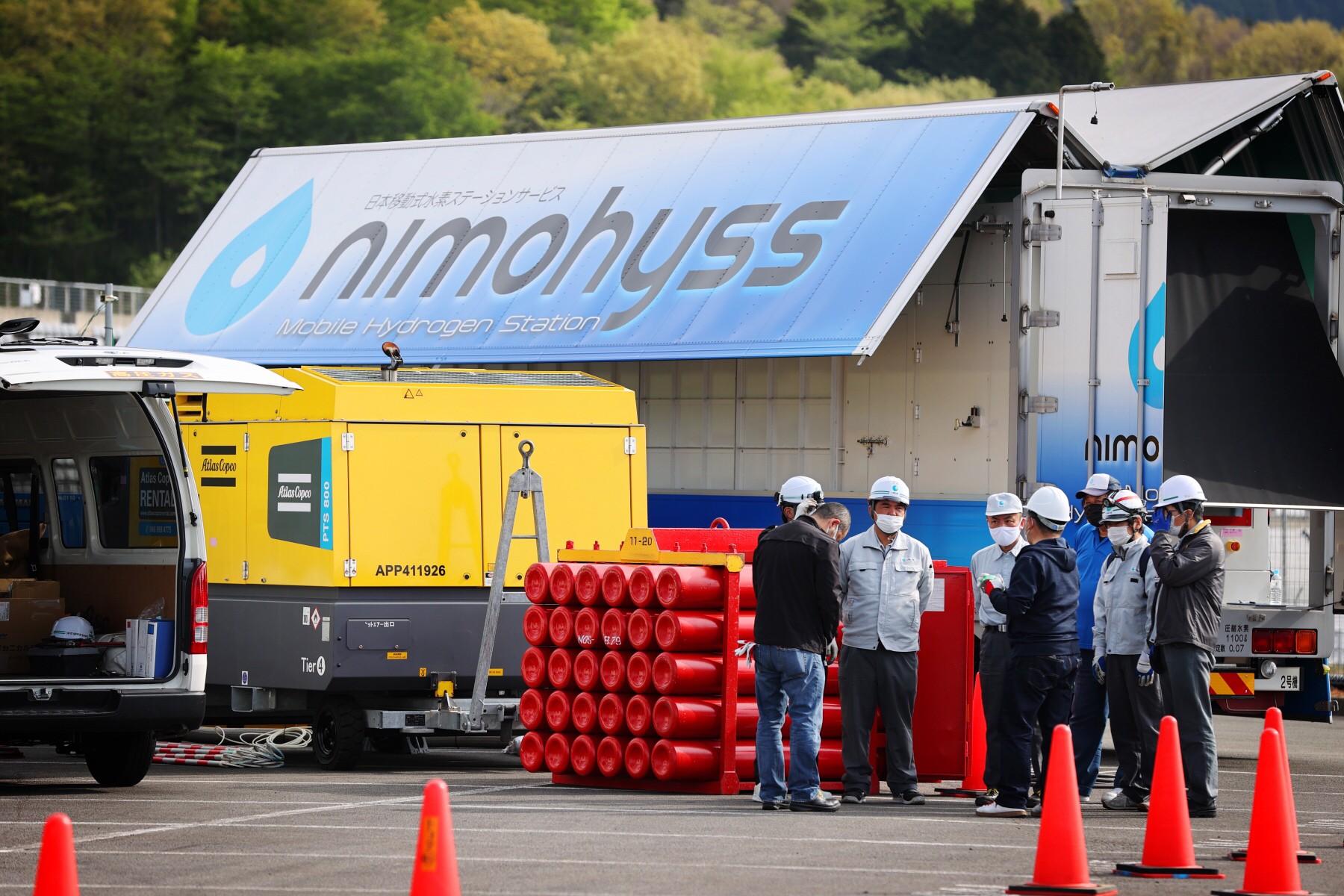
We asked Ichikawa about that, too.
Ichikawa
The hydrogen we will use is green hydrogen transported from Namie Town. As such, it will be CO2-free in terms of production and during use in the race. This is truly a challenge to be carbon-neutral. That said, the reality is that CO2 was emitted in transporting the hydrogen from Namie. We included the amount in our calculations, and we aim to make things carbon-neutral overall.
As President Toyoda has said, a hydrogen society cannot be achieved unless all producers, transporters, and users work together. This challenge we have taken on has made me realize how difficult that is.
Endurance racing a matter of how long one can keep going at it
One of the highlights of this race for Toyota will be to see how many laps can be driven on one hydrogen filling. For this, the team groped to find out what is possible.
Drivers will keep their eyes on a gauge that displays a numerical value indicating the pressure of the hydrogen in the tank. When the number drops past a certain point, it means that the car is about to run out of hydrogen.

The latest test run included an experimental “ran-out-of-hydrogen” simulation. Driver Takamitsu Matsui was sent out to see “how far the car can run” by driving as much as possible with its remaining fuel.
As a result, although Matsui was eventually instructed to return to the pit and not drive until the engine stopped while still on the racetrack, the experiment left the race mechanics feeling that the car could go farther than the engineers had originally calculated.
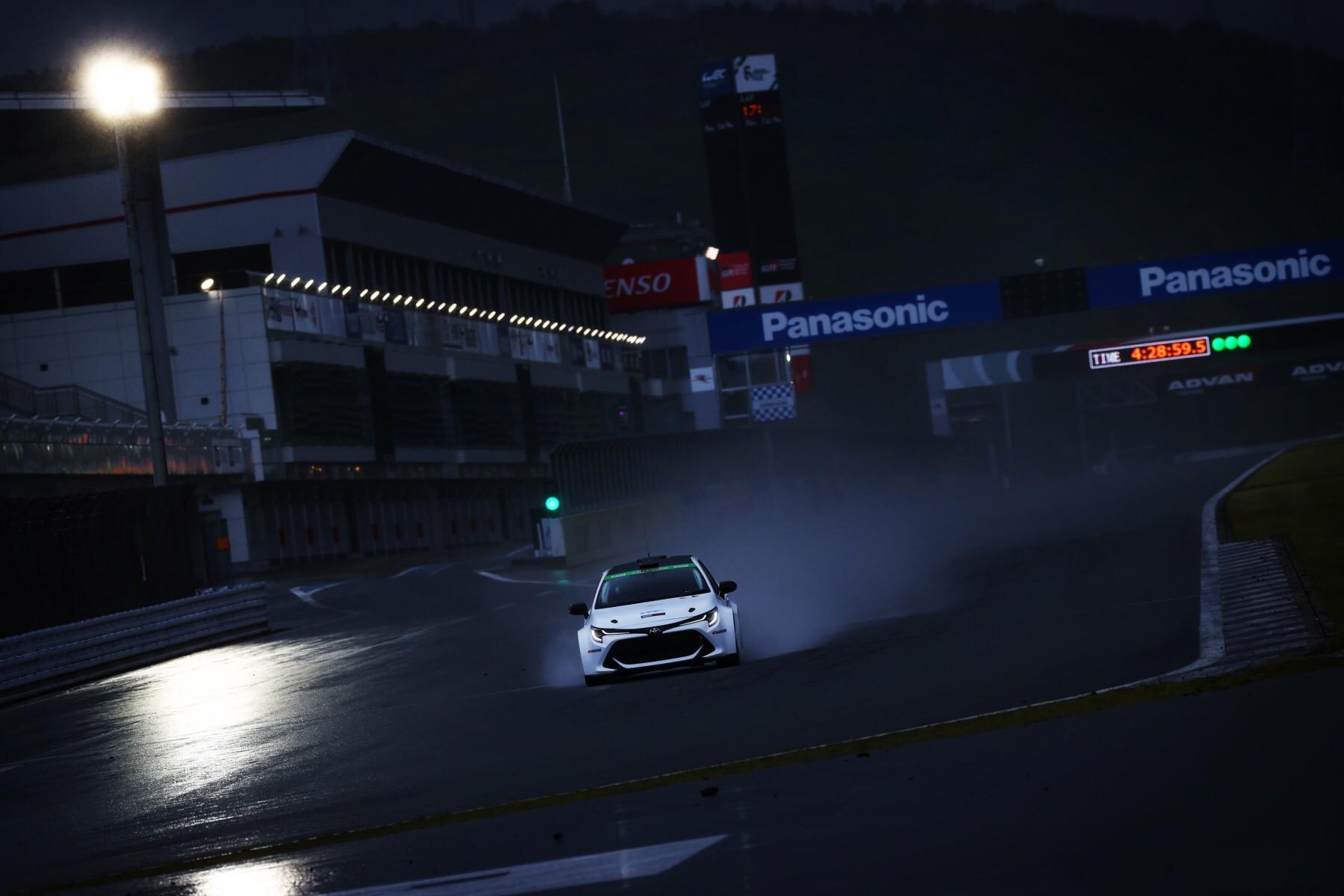
Race mechanics are racers to the core. In this case, they want to push the car as far as possible to reduce the number of hydrogen fillings and aim for a top-place finish. On the other hand, the hydrogen tank engineers are unable to hide their anxiety about this and have, while going over the data on tank pressure and other factors, worried aloud: “Can we really get away with driving that far?”
As these “racers” and engineers were in the pit scouring the data sent by the car’s onboard sensors, they kept at each other as if they were haggling price discounts. “We think we can go 15 laps!” “No, 15 laps might be tough. Let’s start with 13.” So, seeing how many laps it takes before the Corolla has to return to the pits during the actual race will be a huge highlight.

The hydrogen filling staff fighting in an endurance race
As mentioned above, hydrogen filling takes time. But that’s not good enough for the fillers, who said that they want to shorten the time as much as possible so that the Corolla can go long distances. Project General Manager Kanie shared his view.
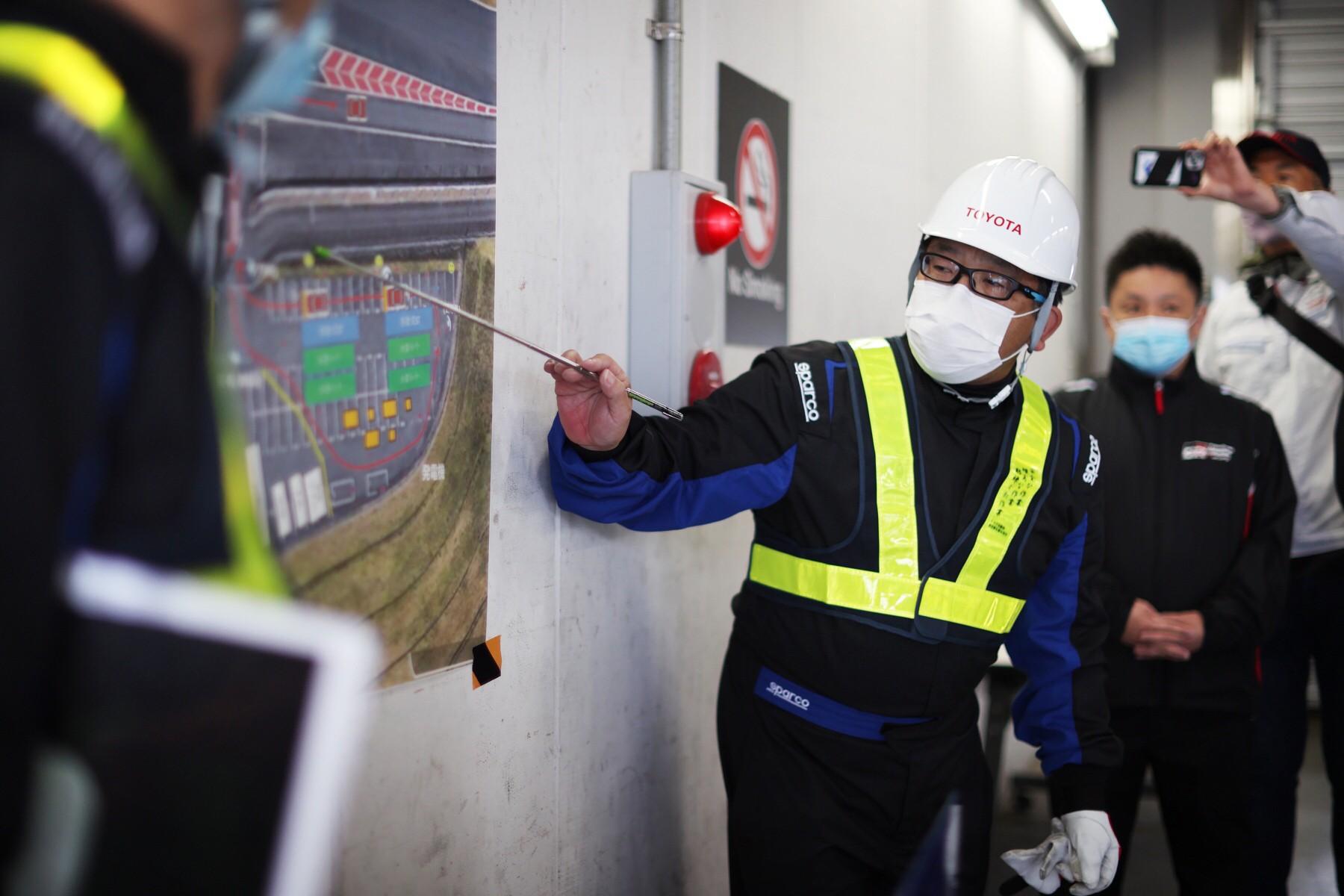
Kanie
Because it’s a race, I want to be able to get the car back on the racetrack as soon as possible. If it can drive even one meter farther, we will be able to gather just that much more data. I think that doing so will bring us closer to realizing a hydrogen-based society and carbon neutrality.
To that end, we wanted to shorten the lead time for each process. Incorporating the Toyota Production System, we have been thinking about how to work as efficiently as possible. We want to keep improving as we go through our paces during the race. Because it seems that we will be doing an uncountable number of fillings, we want the last filling of the 24 hours to be the one done in the shortest time.
We are working with people from various companies involved in hydrogen. They are from Iwatani Corporation, Taiyo Nippon Sanso Corporation, and Suzuki Shokan Corporation. All of them, along with our members, will fight for 24 hours to be able to drive even just one meter farther, as the drivers strive to do the same. So, we ask for your support.
For this race, the hydrogen filling area will also be treated as part of the pit lane. That means that the filling members will also be members of the racing team fighting for 24 hours wearing fire-resistant jumpsuits just like the pit mechanics. Toyota Times will be sure to also take in the action of the filling members’ 24-hour race.
